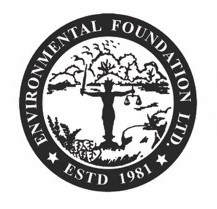The Vidattaltivu Nature Reserve was gazetted in 2016. But within just one year of its declaration as a protected area, there are plans to degazette a 1000 ha area from its very centre for a fishery project that includes prawn farming; a fishery that has a history of failures in Sri Lanka and across Asia, while also resulting in the widespread destruction of mangroves. The National Aquaculture Development Authority (NAQDA) has developed a proposal for a 1000 ha Aquaculture Industrial Park
The Hakgala Strict Nature Reserve is nestled in the Central Highlands, covering 1142ha of land in both the Nuwara Eliya and Badulla districts. The upper montane rainforests of the reserve are rich in biodiversity, with 40% of woody plants being endemic. These pygmy forests house endemic species such as the highland grey slender lorris and purple-faced langur, as well as Sri Lanka’s apex predator, the Sri Lankan leopard. This protected area is also a catchment for the Uma Oya, which
A little more than 3km from Meethotamulla, the towering garbage dump that led to the loss of 30 lives, is another stark example of Colombo’s urban solid waste mismanagement: the Kotikawatta dumping ground. Kotikawatta – Mulleriya Pradeshiya Sabha began dumping waste in Kotikawatta in 2007, in the Kotikawatta cemetery which was located at a higher elevation, yet with time the garbage began to spread to the lower paddy fields that belonged to 15- 20 private landowners. While the extent of
Ever since it set up in 2012, the juice factory owned by Dabur Lanka (Pvt) Ltd has been the cause of severe water scarcity in Kotadeniya and 15 other adjacent villages including Velinhinda, Erabandha, Galingbure, Dhiyagampala and Halpe. Even villages like Halpe, which are situated 8km away from the factory have not escaped the effects of this escalating depletion of groundwater that has been instigated by over-extraction of the factory. During a site visit conducted on the 28th of March, EFL’s investigation team
Following complaints from a CBO regarding the illegal construction of a house within the Thalangama wetland, EFL conducted a site visit. Approximately 118 hectares of the Thalangama wetland is an Environmental Protection Area (EPA) under the National Environmental Act and comes under the purview of the Central Environmental Authority. EFL was able to confirm that the illegal construction was taking place within the EPA and learned that it was being carried out despite repeated warnings issued by the CEA. EFL
EFL conducted a visit to a mini hydro project in Kitulgala on the 7th July. A weir currently being constructed has resulted in the river bank being extensively cleared leading to a landslide blocking the river. In addition to felling of trees, rocks have been blasted and the debris has been dumped in the river. The mini hydro project belongs to the Divisional Secretariat of Yatiyanthota and lies in the village of Mahabage on the north bank of Girangkiththa oya
In response to complaints of noise pollution and dust emitting from a quarry, EFL conducted a site to Kaduwela on the 6th of June 2016 to investigate reports of quarrying being carried out without a permit. EFL’s team learned that over 30 quarries were operating at Anda dola and Korathota mountains, while less than 10 quarries had received a renewed permit. It was observed that the surrounding region was predominately covered with agricultural land featuring coconut, paddy, rubber and manioc,
Maha Oya is one of the largest rivers in Sri Lanka, which flows 128 km across four provinces and five districts. It starts from Nawalapitiya, from the area of Aranayake and falls in to the Indian Ocean from Kochchikade, North of Negombo. More than 1.1 million of population lives by the river, harnessing myriad of benefits from the river for their subsistence and livelihood activities. The Maha Oya provides water for domestic and industrial needs of different communities living
Following up on reports of illegal soil extraction in the Panirendawa forest reserve, EFL conducted a site visit on 26th May 2016 to assess the ground situation. 4 abandoned excavation sites were found and approximately 20 acres of land appears to have been cleared for excavation. Further investigations revealed that illegal soil extraction had been carried out 3-4 years ago but had since stopped. Other land use patterns contiguous to the forest reserve are paddy fields, settlements, and the village temple. To prevent illegal soil
EFL is a stakeholder in the five year river management plan by the Geological Mines and Surveys Bureau for the Maha Oya that was implemented after a successful litigation effort regarding river sand and clay mining. In a meeting held on February 2016 regarding the Maha Oya River Management Plan, developers had requested permits for mechanized clay mining. To address this request, EFL conducted a site visit on the 26th May 2016 to six proposed mining plots. EFL is in the
- 1
- 2





